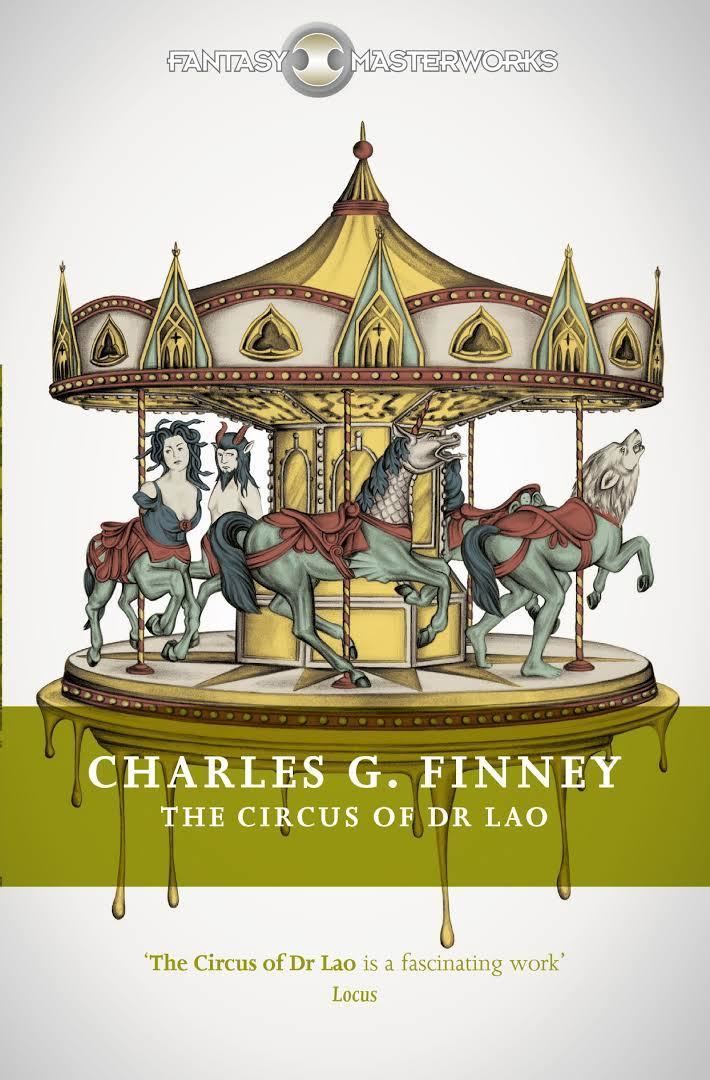7.8 /10 1 Votes
Country United States Media type Print (hardcover) Originally published 1935 Illustrator Boris Artzybasheff Adaptations 7 Faces of Dr. Lao (1964) | 3.9/5 Goodreads Language English Pages 154 pp. Genre Fantasy Fiction | |||||||||||||||||||||||||||||||||
 | ||||||||||||||||||||||||||||||||||
Awards National Book Award for Most Original Book Similar Charles G Finney books, Fantasy books | ||||||||||||||||||||||||||||||||||
The circus of dr lao by charles g finney
The Circus of Dr. Lao (1935) is a novel written by the American newspaperman and writer Charles G. Finney. It won one of the inaugural National Book Awards: the Most Original Book of 1935.
Contents
Although the first edition was illustrated by Boris Artzybasheff, many later editions omit the illustrations.
Plot summary
The novel is set in the fictional town of Abalone, Arizona, whose inhabitants epitomize ordinary Americans as they are simultaneously backhandedly celebrated and lovingly pilloried for their emergent reactions to the wonders of magic and of everyday life. A circus owned by a Chinese man named Dr. Lao pulls into town one day, carrying legendary creatures from all areas of mythology and legend, among them a sea serpent, Apollonius of Tyana (who tells dark, yet always truthful, fortunes), a medusa, and a satyr. Through interactions with the circus, the locals attain various enigmatic peak experiences appropriate to each one's particular personality.
The tale ends with the town becoming the site of a ritual to a pagan god whimsically given the name Yottle, possibly an allusion to the Mesoamerican god Yaotl, whose name means "the enemy". The ritual ends when the god himself slays a virgin, her unrequited lover, and his own priest. The circus over, the townsfolk scatter to the winds. Apparently few of them profit from the surreal experiences.
The book's appendix is a "catalogue" of all the people, places, items, and mythological beings mentioned in the novel, summing up the characters pithily and sardonically, revealing the various fates of the townsfolk, and listing a number of plot holes and unanswered questions not addressed in the book.
List of Dr. Lao's captured animals:
Film adaptation
The novel was later adapted by Charles Beaumont into the script for an effects-filled 1964 movie 7 Faces of Dr. Lao. The film features a great deal of stop-motion animation and was produced by George Pal, a stop-motion animator of long experience.
The "7 faces" are all portrayed by Tony Randall. He appears as Dr. Lao, who alternates between a comical Chinese stereotype speaking in broken English and a dignified figure with a solemn deep voice and a mastery of English; Medusa; Pan; the Abominable Snowman; Apollonius of Tyana, who serves as the sideshow fortune teller and who refuses to shield people from unhappy truths; the magician Merlin, who is so old and fumbling that the obtuse audience does not realize he performs actual miracles when not performing clumsy sleight of hand; a stop-motion serpent that changes its face, depending on who looks at it; and, finally, a circus patron who appears once in a crowd scene. According to Turner Classic Movies, Peter Sellers had also been considered seriously for the multiple roles, but was not yet considered a big enough star.
In the book the name Lao is evidently pronounced "Low", as the doctor recites a doggerel poem which requires that pronunciation for the sake of rhyme. A version of the poem is recited in the film. In the movie the name is variously pronounced to rhyme with low and how, and Randall himself uses both pronunciations. Similarly, the town's name of Abalone is pronounced various ways: like the name of the mollusc (/ˈæbəloʊniː/), to rhyme with "Avalon", and to rhyme with "have alone".
The movie follows the book in only a vague way and inserts a plot about how the town miser, played by Arthur O'Connell, wishes to dupe townspeople into selling their land, as he knows a new railroad is coming.
